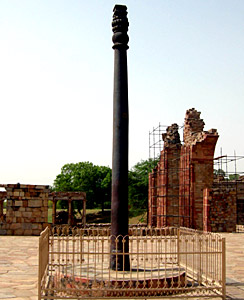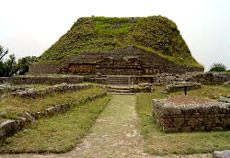 Education during Gupta age was given utmost importance. Holy places and capitals of kingdoms were the common centers of learning. Among the capitals, Pataliputra, Valabhi, Ujjain and Padmavati were famous centers of learning while Ayodhya, Mathura, Nasik and Kanchi were famous centers of education. There were the Agrahara villages which had learned Brahmans who were supported by the revenues of these villages assigned to them for maintenance by the state. The teachers were often attracted students from far and wide. In South India centers of learning were known as Ghatikas.
Education during Gupta age was given utmost importance. Holy places and capitals of kingdoms were the common centers of learning. Among the capitals, Pataliputra, Valabhi, Ujjain and Padmavati were famous centers of learning while Ayodhya, Mathura, Nasik and Kanchi were famous centers of education. There were the Agrahara villages which had learned Brahmans who were supported by the revenues of these villages assigned to them for maintenance by the state. The teachers were often attracted students from far and wide. In South India centers of learning were known as Ghatikas.
System of Education during Gupta Age
According to Manu there were two types of teachers- `acharya` and `upadhya`. The acharyas were entrusted with fundamental teachings of Vedas, Upanishads and Kalpasutra. The acharyas took their work as `work of charity` and refrained from taking fees from pupils. The Upadhyas took teaching as a profession and charged the pupils. For scholarly education, study of Dharmashastras, Smriti, itihasa-puranas and heterodox scriptures were included in the syllabus. For non-scholarly education, mathematics, science of warfare, astronomy, astrology and medicine were included. Education was generally permitted to the people belonging to the upper stratum of society. Brahmins were eligible for all types of education, while the Kshatriyas and Sudras were eligible only for some items of learning. But the Sudras were deprived completely from any light of education.
 The most famous centers of learning were the monastic collage founded mostly by the Buddhists.These centers contributed to the building of a harmonious cultural life of the people. Taxila, Varanasi, Ujjain and Amravati were other famous centres of learning before the Gupta Age. University of Taxila, though had lost its former glory due to Hun invasion, yet had maintained its standard. Valabhi in Gujarat and Vikramasila in Bihar were other famous centers of learning.
The most famous centers of learning were the monastic collage founded mostly by the Buddhists.These centers contributed to the building of a harmonious cultural life of the people. Taxila, Varanasi, Ujjain and Amravati were other famous centres of learning before the Gupta Age. University of Taxila, though had lost its former glory due to Hun invasion, yet had maintained its standard. Valabhi in Gujarat and Vikramasila in Bihar were other famous centers of learning.
Technical education was also imparted by the guilds. Technical training included metallurgy, ivory and diamond cutting, woodwork. This was usually done in the family itself as professions had become hereditary. Sometimes artisans took outside students as trainees. Elementary education probably commenced at the age of five and was imparted by teachers who were called Daraka-charyas. Lipisalas or primary schools did exist in many villages. Children used to write either on wooden boards in colour or by the finger on the ground covered with sand. Excellence in metallurgy is proved by the Iron Pillar, Delhi of King Chandra.
Nalanda University
Nalanda University can be considered as an epitome of education in the Gupta age. Nalanda in Magadha was the international university and students from Asia had come there to pursue their higher education. It was the largest of its kind in the contemporary world to which scholars of different castes, creeds and races hailing from India and from countries like China, Japan, Korea, Java, Sumatra, Tibet, Mongolia flocked for advanced studies. There was catholicity of method in education and curriculum was liberal. Wide varieties of subjects were taught. The curriculum included systems of philosophies of different religions in India as well as arts and sciences. The state provided revenues of more than hundred villages for the upkeep of the university. There were a hundred lecture halls where classes were held daily. Scholarship was measured by the number of Sutra collections a student was able to master. Time was regulated over a wide area of Northern India by the Nalanda water clock.



















